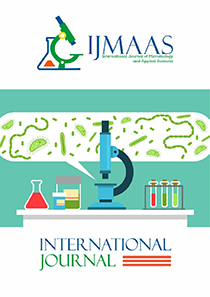Bacteriological and Physicochemical Assessment of Sauerkraut Produced from Cabbage (Brassica olearaceae var. capitata) Without Addition of Microorganisms
Vol 2, 2023
KEYWORDS
Sauerkraut, Cabbage, sodium chloride, Lactobacillus sp, fermentation, lactic acid bacteria, vitamin C
Abstract
This study aimed to evaluate the bacteriological profile of sauerkraut produced without addition of microorganisms. Fresh cabbage was purchased from the market and sliced into thin shreds. The shredded cabbage was fermented for 15 days with the addition of sodium chloride 2.25%. During fermentation, samples of brine were collected at different time intervals for biochemical and microbiological analysis. Total sugar in the brine increased slowly to 3.0% on the 8th day and reduced to 1.0% on day 15; reducing sugar also increased slowly to 2.0% on the 8th day and then reduced to 0.2% on the 15th day. Total acidity increased from 0.4% from start of fermentation to 2.3% on the 15th day. The pH of the shredded cabbage at start was 6.8, which decreased to 3.9 on the 15 day. While Vitamin C content varied form 27.2mg/100g from start to 16.8mg/100g. Bacteriological analysis revealed that counts of aerobic mesophilic bacteria and total Lactobacillus within limits of established by the legislation. Cultural, morphological and physiological analysis also revealed that Bacillus, Pseudomonas and Micrococcus were dominant at the initial fermentation, but later, Leuconostoc and Lactobacillus became dominant. While Salmonella and coagulase-positive Staphylococcus and coliform bacteria were absent. The results revealed that the production of fermented foods, such as sauerkraut, without addition of microorganisms may provide a product of good microbiological quality if the hygienic-sanitary conditions are properly maintained. This present study revealed that sauerkraut produced without addition of microorganisms is safe and suitable food, and may be a good alternative in gastronomy.
Current: Vol. 4, Issue 1, 2025

Call for papers
The International Journal of Microbiology and Applied Sciences warmly welcome your valuable articles for publication.
